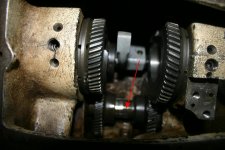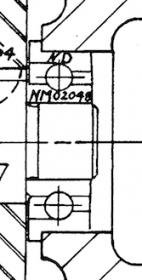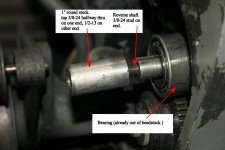I'm trying to remove the reverse shaft from my EE10 headstock. Both of the gears on the shaft have the setscrews removed and they slide easily, so they are not holding the shaft. (Sorry for the blurry photos.)

The only thing I see holding the shaft in place is the left side bearing, which is held in place on the headstock by the "Reverse Shaft Bearing Cap". That is off. You can see the bearing in this second photo.

The shaft/bearing have resisted all efforts to pull it smoothly out. (It appears that someone used something orange-colored to retain the bearing.)
It is in a place where it is impossible to place a drift behind it. The manual doesn't show any setscrews or snap rings holding it in.
Am I missing something?
I am ready to try a 5lb slide hammer, threaded onto the end of the shaft, to impact the shaft against the bearing to drive it out.

The only thing I see holding the shaft in place is the left side bearing, which is held in place on the headstock by the "Reverse Shaft Bearing Cap". That is off. You can see the bearing in this second photo.

The shaft/bearing have resisted all efforts to pull it smoothly out. (It appears that someone used something orange-colored to retain the bearing.)
It is in a place where it is impossible to place a drift behind it. The manual doesn't show any setscrews or snap rings holding it in.
Am I missing something?
I am ready to try a 5lb slide hammer, threaded onto the end of the shaft, to impact the shaft against the bearing to drive it out.








